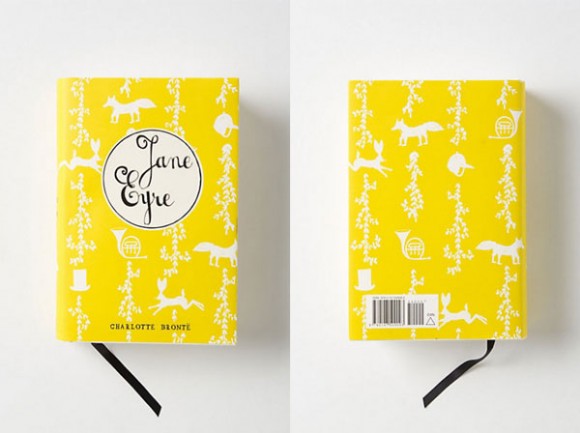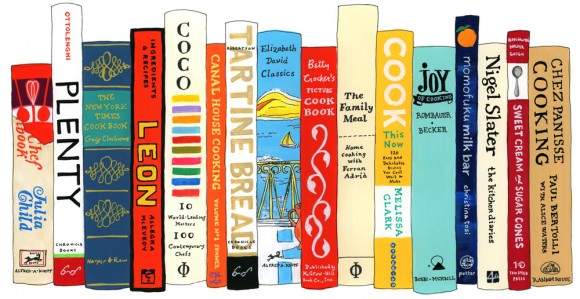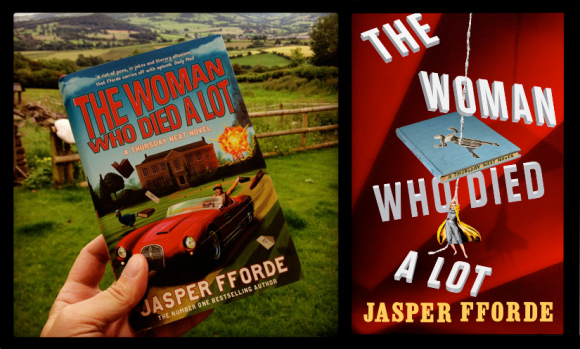by Sam Tackeff | Mar 4, 2013 | Books in 2013, Tea

Let’s curl up with a cup of tea, and talk about my second book of the year. I’m a few books along after this one, but as you might have guessed, I’m a little behind on my re-caps.
#2. Jane Eyre by Charlotte Brontë
Read on Kindle, 350 pages
First published October 16th 1847 by Smith, Elder & Co.
Under the pen name “Currer Bell”
Read on Kindle, as well as listened on audio read by Josephine Bailey
While everyone has been captivated with the newest episodes of Downton Abbey, I’ll freely admit that I’ve been putting off the rest of the series. We watched the first two seasons, but every time I plan to curl up with a cup of tea and watch multiple episodes, I decide that I’d rather be watching the brilliant Swedish version of Wallander, or an episode of some sexy home renovator on HGTV, or better yet, reading a good book.
I love that *everyone* is obsessed with a British melodrama, but I’m annoyed at Julian Fellowes for putting all of my friends and loved ones through the ringer. (Yes, I’m well aware of all the spoilers – once I stopped watching most live TV shows, I came to terms with knowing the plot in advance of most of my television viewing. And since the episodes came out earlier in Britain, I’ve now had not one, but two rounds of impertinent “friends” blabbing and ruining the fun for everyone. You know who you are, jerks.)
Despite my reluctance to immerse myself in Downton, I came to the conclusion that I did indeed want to indulge myself in pithy British melodramas, so I picked up a copy of Jane Eyre.

Mr. Boddington’s Penguin Classics, Jane Eyre via Anthropologie
What can I tell you about this novel? I’m sure you have read it. If you haven’t you probably should, because it’s called a “classic” for a reason. Jane is an orphaned girl raised by a bitter aunt and abusive cousins, and is shipped off for her impertinence to get educated at a hard knocks school for the poor and underprivileged. She makes her escape to become a governess, and finds herself in a long drawn out song and dance with the brooding and handsome master of the house, Mr. Rochester.
I liked the novel, I did. But I found myself deeply frustrated with the character of Mr. Rochester. I’m sure there are some of you who think that I’m a criminal for hating on the Rochester. He even makes ‘Most Romantic Literary Character’ lists. He’s dreamy you say – or at least Michael Fassbender is in his portrayal of him. But here’s the thing. There are hundreds, maybe thousands out there who agree with me.
The internet is full of people who feel the same way – here’s a great Millions article called ‘Mr. Rochester is a Creep: A List’ which sums him up well: “Mr. Rochester, if he isn’t an asshole, he’s a psychopath–or, simply creepy and duplicitous.” Yep, seems about right to me.
***
Cover Art. You can be sure that the original didn’t have snappy cover art like this (above). I’ve been having trouble finding a cover that I liked. While perhaps overly cheerful, I found this cover to match some of the frivolity of the book, rather than other covers which either feature a somber woman’s portrait, or odd gothic imagery.
An interesting thing that I discovered while poking around the inter webs for this re-cap: A series called Re-Covered encouraging the re-design of book cover art. via The Fox Is Black.
by Sam Tackeff | Jan 12, 2013 | Books, Books in 2013

Before I discuss a non-food related novel with you, let me just mention how much I absolutely adore Jane Mount’s Ideal Bookshelf Series. Here’s one of my favorites: Ideal Bookshelf 506: Cooking (the link is to where you can purchase your very own copy on 20×200, not an affiliate link!) I own almost every cookbook on this shelf. When I can afford to commit, I’ll be inquiring about a custom one of her work.
• • •
Reading is one of my favorite competitive sports. Every year I make a resolution to read 52 (or more books). Usually the competition is with myself (although admittedly I’d always try to win the reading competitions at my library): I have a finite amount of time on this earth, and there is a seemingly infinite amount of reading I’d like to tackle. I find that it helps to set goals, rather than throw my hands up in defeat.
Curiously, I don’t “count” my reading of cookbooks, and since I read so many like novels, this would put me well above my yearly quota. For each novel or non-fiction book, I like to write a paragraph or two in summary, sometimes about the book, or sometimes about the things that reading it reminds me to think about. I started this practice because I wanted to find a way to pause, record, and acknowledge the book I read, rather than just consume it. Over time it became a form of gratitude for the author – someone spent months, years, or decades of work on this project, and reading aimlessly and moving on seemed thankless, and too abrupt of an ending.
Usually these notes find themselves in my Goodreads account, or a personal blog, or even just written in a moleskin. But since this blog has become so much more than just food, I figure I’ll stick them here until I get bored, or someone convinces me otherwise.

#1.The Woman Who Died a Lot by Jasper Fforde
Hardcover, 384 pages
Published July 12th 2012 by Hodder & Stoughton
(US edition published October 9th 2012 by Viking Adult)
Read on Kindle, review copy provided by NetGalley
This is the seventh book in the Thursday Next series. To my best recollection, I started reading these after finding a copy of the third book ‘The Well of Lost Plots’ in my house, collecting dust. The purchase was an ill-fated attempt by my mother to find something that my brother would enjoy to read. (My brother, who voraciously consumes media in the form of blogs, news articles, and television, is the only member of our nuclear family who doesn’t particularly enjoy the printed word. We’re not sure where he came from.)
Fforde, a master of literary puns, succeeds again in writing something that makes me laugh the entire way through. The main character, Thursday Next, is an aging ex-special ops detective, forced into semi-retirement as the chief librarian of Swindon. Though not my favorite edition of the series, Thursday is a great female lead, and I always enjoy coming back to her adventures. (I should note that newcomers to the series would be much better off starting at the beginning – I accidentally read the third book in the series first, and backtracked, and you’d be missing a lot if you started out here.)
“Do I have to talk to insane people?” “You’re a librarian now. I’m afraid it’s mandatory.”
Please note the UK cover, left, (via Jasperfforde.com) vs. the American version, right – I’ve yet to find a situation where I don’t prefer the British cover art. The UK version includes a fast car driven by the likeable aging protagonist, an explosion, and an escaping dodo – a generally fun cover. The US version, has a design which I admittedly like the look of, but is heavily stylized, and misses the opportunity to represent the strong female lead of a certain age by replacing her with an attractive young woman. Meh.





